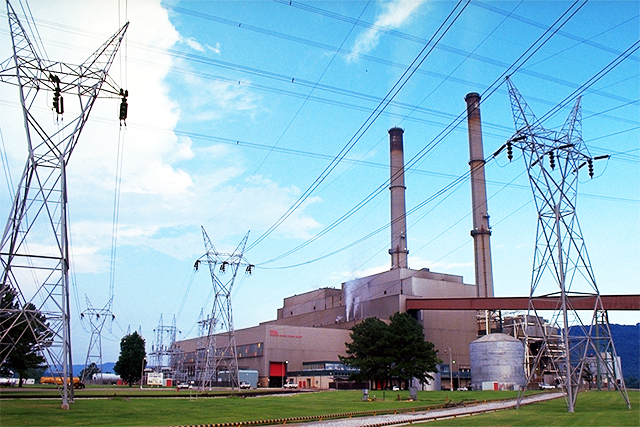
Pace quickens for extinction of coal-fired electric in the US
Mar 25, 2014 - Steve Davidson - Community Digital News
 |
TVA Willow Creek power plant newly scheduled for retirement / Photo: Wikipedia
|
SALEM, Ore., March 24, 2014 - The U.S. Energy Information Administration (EIA) recently reported that nine more coal-fired electric power plants have been scheduled for retirement. EIA has revised its forecast for coal-fired plant retirements upward twice since November.
The newest retirements reduce generating capacity by 5.4 gigawatts, on top of the 20 gigawatts of retirements announced by EIA a month ago. These losses are in addition to the 40 gigawatts of retirements it forecast just four months ago. Most of these retirements, totaling 65.4 gigawatts, will take place by 2017.
The main reason given by owners for the retirements is implementation costs associated with EPA’s new MATS regulation. MATS goes into effect in April of 2015. MATS stands for Mercury and Air Toxics Standards. It’s an EPA requirement that power plants reduce certain toxic metal pollutants with known health hazards.
Other reasons include competition from natural gas, weaker than expected demand for electricity and aging coal-fired plants. Operators say that upgrading older plants to satisfy MATS requirements isn’t economically feasible.
The TVA, whose three gigawatts of retirements are the bulk of the new closures, say that eight units in three power plants “will not operate beyond the MATS implementation date (April 2015).”
MATS and the Cross-State Air Pollution Rules are estimated to provide annual benefits of $150-$380 billion and prevent 18,000-46,000 premature deaths, 540,000 asthma attacks, 13,000 emergency room visits and 2 million missed work or school days each year.
- EPA
EPA is quick to rattle off reams of unreferenced statistics on the social benefits of MATS and the cross-state rule. Their claim of up to $380 billion per year in savings, though, exceeds credulity.
What EPA doesn’t do at all is provide cost estimates for how much MATS will increase consumer electric bills. The closest EPA comes to that is to say MATS solutions will “stay well within normal historical fluctuations.”
EPA has proven unreliable when estimating the effects of its regulations. For example, EPA claims that MATS compliance will retire less than two percent of coal-fired power plants (< 5 megawatts), according to the Bipartisan Policy Center. The newest closure announcements alone are more than ten-times that.
EIA now estimates that MATS implantation will retire 11 percent of all coal-fired power plants by 2020, most of them before 2017.
EIA says retirements will add stress to the power grid under future demand loads. Power grid operator ISONE (The Independent System Operator of New England) rejected the original retirement application for the Brayton Point Power Station for that reason. Brayton Point, the largest coal-fired  power plant in New England, is on the latest EIA list of closures.
There is disagreement about how much it’ll cost for plants to meet MATS requirements. The EPA minimizes concerns by simply saying there are “affordable” MATS options. It estimates costs at $9.6 billion per year nationwide. Industry groups disagree that is affordable.
The stampede of new coal plant retirements speaks for itself. The $9.6 billion per year (or more) to pay for MATS in remaining plants will be added to ratepayer bills.
MATS, though, won’t put coal-fired electricity out of business. That glory will go to a newer carbon dioxide restriction nearing approval by the EPA. That restriction will require coal-fired power plants to cut carbon dioxide emissions by half. The costs for that will make MATS seem like a bargain.
No existing commercial coal-fired power plant meets the EPA proposed carbon dioxide standard. Nobody knows how much advanced coal will cost. The two plants being built to do it are hundreds of millions of dollars over budget. The CCS technology needed to do the job remains an unproven solution. No other CCS plants are being planned.
Adding carbon dioxide reductions on top of MATS and the cross-state rule will make coal-fired power plants to expensive to build and operate. That is what will bring about the extinction of coal-fired electric power in the United States.

|